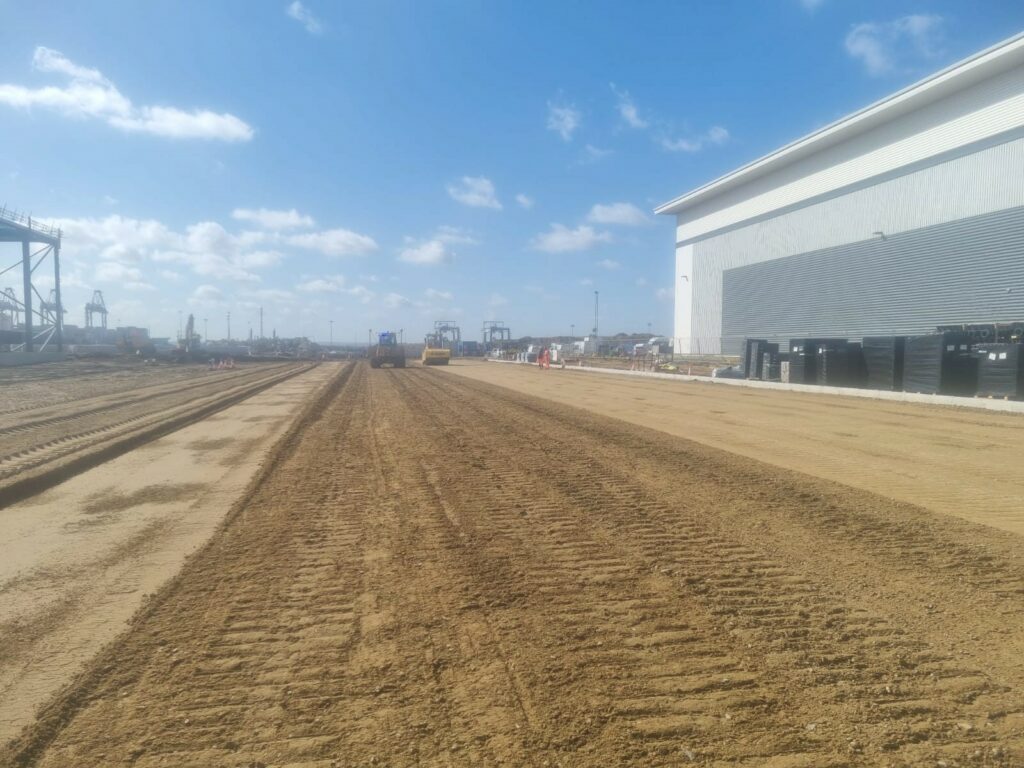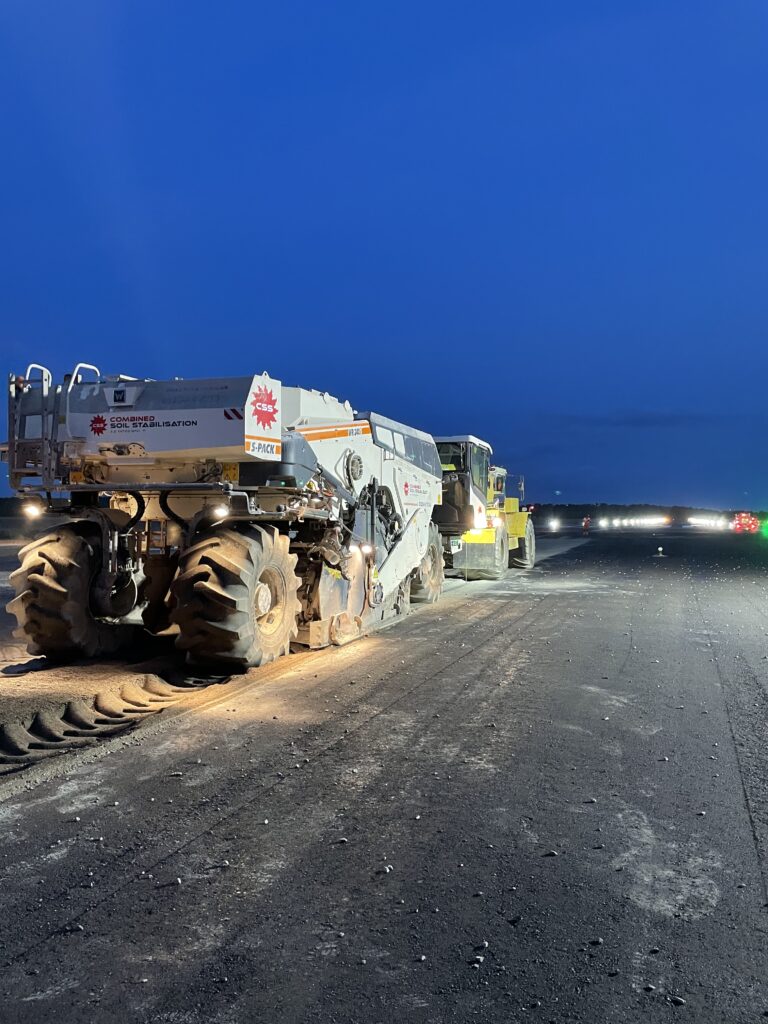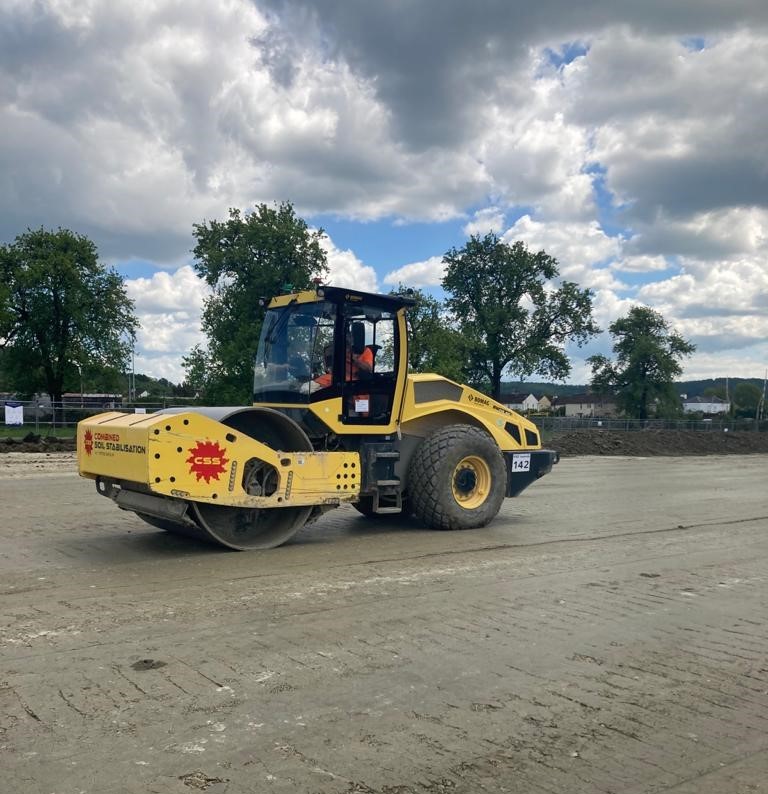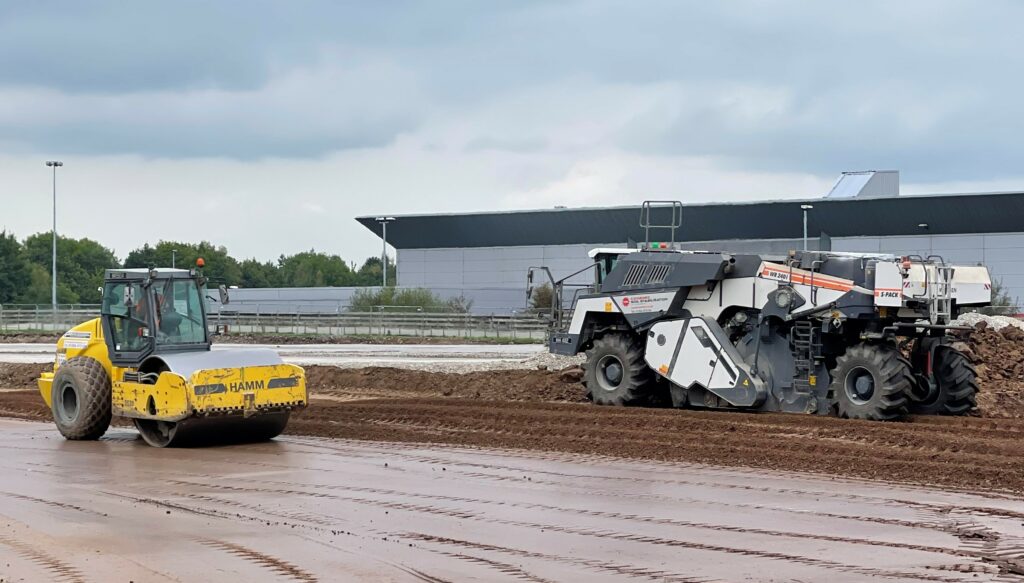
DP World, LONDON GATEWAY PORT
Combined Soil Stabilisation Ltd have completed the first visit of two on a new facility…
Read MoreThe Norwich Northern Distributor Road (NNDR) is a new 20km dual carriageway road. Balfour Beatty was awarded the project as main contractor and we were awarded the stabilisation contract for a HBM foundation in June 2016.
Design
We assisted with the laboratory trials undertaken at Norfolk County Council's laboratory. The trials were required to determine material suitability and ascertain the expected strengths and stiffness of each of the two soil types at the different mix proportions. The project required Class 2 and Class 3 road foundations.
Construction
Following successful completion of the insitu site trials the mix in place method of construction was decided as the best option both financially and for constructability. A tight trim tolerance was required with the average of +10/-10mm as the blacktop was laid directly on top of the stabilised soils. Two foundation classes were required.
The two layer construction had a 250mm thick lower layer as a capping layer with a minimum strength class C0.8/1.0 and a minimum surface stiffness of 100Mpa (the Class 2 foundation requirement). The upper sub-base layer required a minimum depth of 250mm but was mixed 300mm deep to ensure it keyed into the lower capping layer. This was achieved by adding 4% Cement to both layers.
The single layer construction was stabilised by adding 5% cement to a 300mm deep HBM sub-base layer with a minimum strength class C1.5/2.0 and a minimum surface stiffness of 200Mpa (the Class 3 foundation requirement). As strengths less than 8-10N/mm.sq. could not be guaranteed crack induction was used for the single layer construction areas using a fin attached to a small excavator. We had developed, trailed and adopted this innovative method on a previous project, the A46 in Nottinghamshire.
All binder additions required to achieve a +/-10% tolerance which was undertaken by a Streumaster spreader which includes ground speed sensors to guarantees accurate powder dispersion.
The cement and soils were mixed using our new state of the art Wirtgen 240i S-Pack mixer which are the latest generation in stabilisation specific mixing units.
The mixer units were attached to a water bowser to accurately add water directly through the machine. Cross falls were also inputted controlling the four way suspension system to ensure minimum depths were achieved across the width of the carriageway.
Following mixing the layer was trimmed with a Caterpillar 14G grader fitted with total station GPS system controlling the blade to ensure the +/-10mm tollerance was achieved. Compaction was carried out using our 20t Hamm Rollers and a Pneumatic Tyre Roller to ensure a tight surface on the sandy soils.

Combined Soil Stabilisation Ltd have completed the first visit of two on a new facility…
Read More
Combined Soil Stabilisation have recently completed a project on Southampton Airport.
Read More
Heave due to the presence of sulphates need not be an issue
Read More
Logistics unit on a prominent development close to the M6
Read More